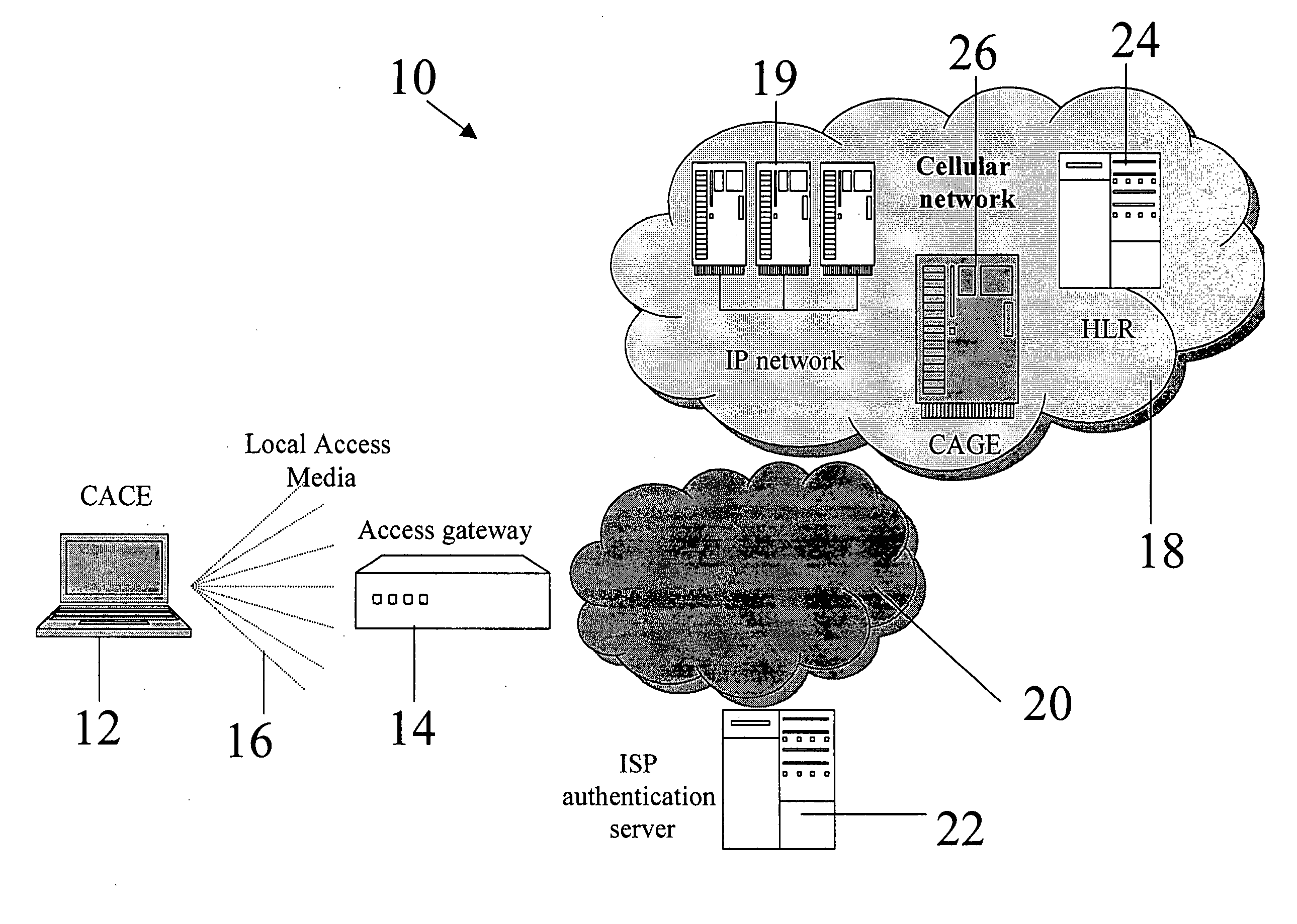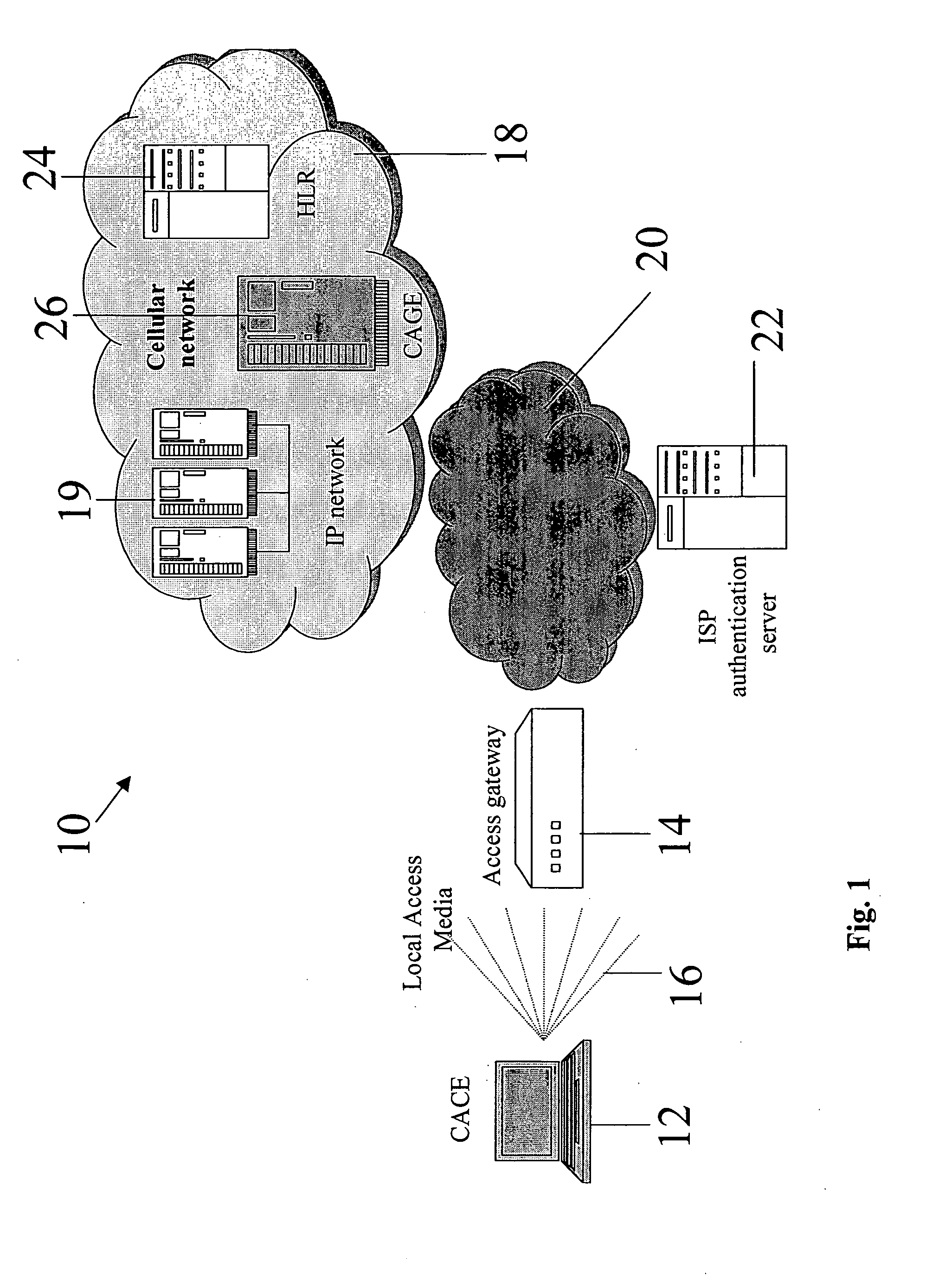Accessing cellular networks from non-native local networks
a technology of local network and accessing cellular networks, applied in the direction of data switching networks, wireless communication, broadcasting with distribution, etc., can solve the problems of failure to recognize parts of the sim handshake, difficult interfacing between a cellular and a lan system,
- Summary
- Abstract
- Description
- Claims
- Application Information
AI Technical Summary
Benefits of technology
Problems solved by technology
Method used
Image
Examples
embodiment
Alternative Sub-Embodiment
[0310] Sub-embodiment 2 is very similar except that the procedure starts with an earlier stage in which the User logs on to the Hot Spot in a Guest mode, using his clientless terminal 100. Initial contact with the Cage 108 can therefore be made directly from his terminal 100 and he does not have to initiate an SMS exchange, although the may do so. The remainder of the procedure is the same as for the first sub-embodiment. The signal exchange procedure is illustrated in FIG. 12.
[0311] The two approaches both have the same exposure to attempted hacking resulting in nuisance SMS messages. Sub-embodiment 2 requires only a single SMS and thus is faster and simpler for the user. Sub-embodiment 2 however requires the user to know how to log on as a guest to the Hot Spot. Sub-embodiment 1 requires the user to know the telephone number of the CAGE and be able to initiate the SMS exchange. Sub-embodiment 2 is advantageous when SMS delivery becomes problematic. If bo...
PUM
 Login to View More
Login to View More Abstract
Description
Claims
Application Information
 Login to View More
Login to View More - R&D
- Intellectual Property
- Life Sciences
- Materials
- Tech Scout
- Unparalleled Data Quality
- Higher Quality Content
- 60% Fewer Hallucinations
Browse by: Latest US Patents, China's latest patents, Technical Efficacy Thesaurus, Application Domain, Technology Topic, Popular Technical Reports.
© 2025 PatSnap. All rights reserved.Legal|Privacy policy|Modern Slavery Act Transparency Statement|Sitemap|About US| Contact US: help@patsnap.com



